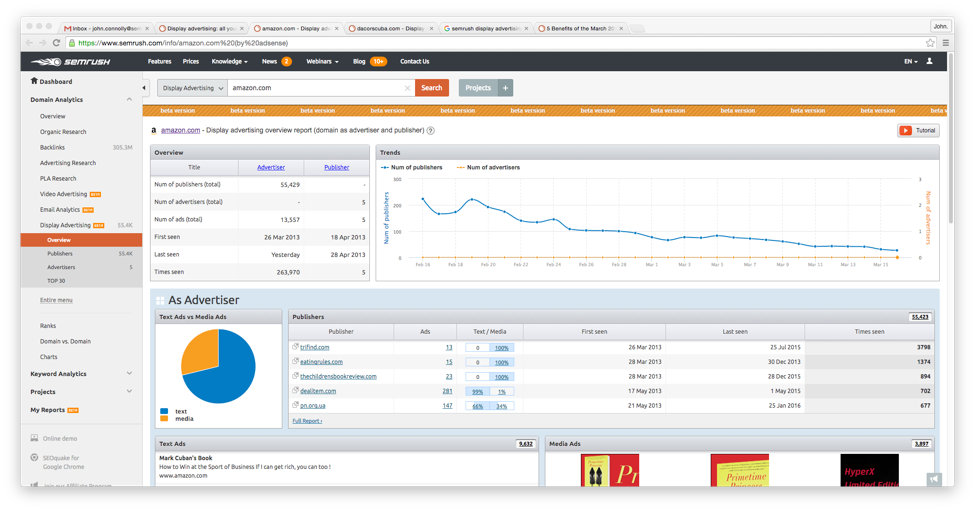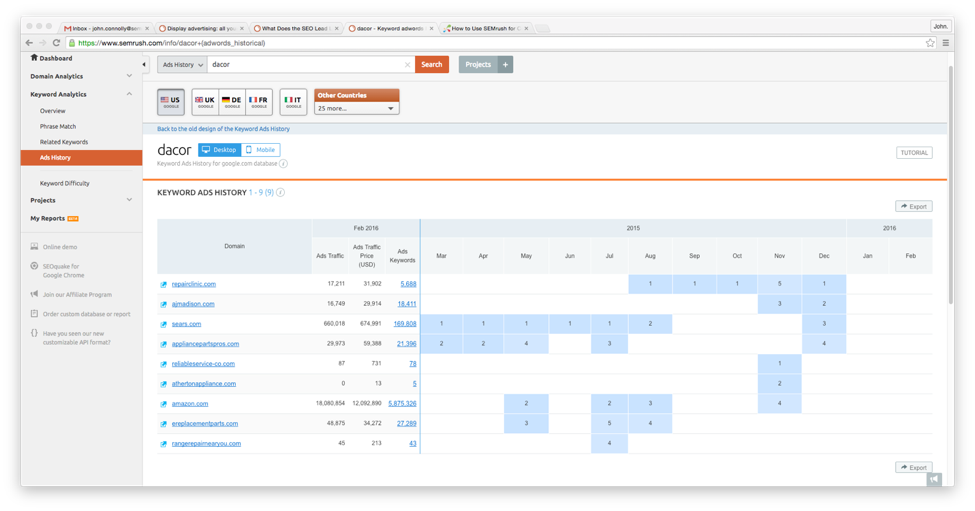Imagine being able to surf the net without swatting at those pesky pop-up ads. As we all know, those pop-up ads, video ads and flash banners are a way of life – but they also allow our online experience to be free. In recent years, many users have downloaded software designed to block online ads – ad blockers – and their numbers are growing. Ad blocking has been around for years, but it became an industry obsession in 2015 when mainstream tech companies like Samsung and Apple embraced it.
Naturally, these ad-blockers aren’t sitting well with advertisers and publishers.
Lesser of Two Evils
Google gets 90 percent of its revenue from online ads, while mobile ads make up 75 percent of Facebook’s ad income. That’s big business. A lot of people are threatened – from publishers to search engines to social media sites.
IBM studies indicate 144 million people worldwide used ad blockers in 2015, up 70 percent from 2014. An arms race of sorts is developing in the software realm where you have the ad blockers vs. the companies creating software to block the software of the ad blocking software – yeah, it’s getting really confusing. But stop to think for a minute: while ad blocking may offer short-term relief for surfers, it could have long-term, tsunami-like effects on the quality and access of future web content.
Changing the Rules
Balancing user friendliness, ad and content judgment, plus the need to make some hard cash is a difficult thing to get right. Competing with diminished attention spans plus ad-blocking software has forced advertisers to rethink their strategies, if for nothing else because it’s a matter of survival.
Among the answers to the ad-blocker challenge are “acceptable ads,” – small text ads, small pictures, anything that is not interrupting the viewer’s flow, while still helping to finance the Web experience. What’s appealing about these types of ads is they usually get through Adblocker’s filters.
Adapting to the New World
Banner and pop-up ads, which once enjoyed high click-thru-rates (CTRs) of ten percent, are now viewed as little more than nuisances by the masses. As a result of ad-blocking software, many advertisers have turned to something called ‘native advertising.’ Native ads look similar to editorial content produced by traditional web publishers, but they usually have varying kinds of design features that distinguish it from non-sponsored content.
According to AdvertisingAge, the caveat here is that advertisers must target their viewers with native content that relates to what they are reading, searching and talking about. The most logical way to deliver this is through content and social media. If done right, it can add value to the publisher, brand and consumer. The largest social platforms in the world utilize native in-feeds like Facebook and Twitter.
Time, Forbes and The Wall Street Journal are also using new advertising integrations. These folks are rethinking their way of approaching the advertiser-user relationship. The Washington Post recently adopted a style where they offer single sponsor slots rather than placing display ads in content or splashed elsewhere over the site – a good example of value-added, non-obtrusive advertising.
Social media advertising is in for a dramatic upswing, according to Advertising Age.
Even the feds have taken note: In December, The Federal Trade Commission (FTC)released a policy in which it laid out stringent guidelines on how media and advertising outlets should interpret native ads, saying care should be taken not to mislead consumers about their commercial natures. Retailer Lord & Taylor recently settled with the FTC over charges that it had not made clear it paid for a fashion magazine article promoting its clothing. This is only the first shot across the bow of native advertising.
Mobile Ad-Blocking
The ironic part about mobile ad blocking is that, despite Apple’s recent ad-blocking decision, publishers are still in the early days of making money off mobile screens, and not felt the actual effects of ad blocking yet. Blocking ads on Android, for example, has not been as simple as installing a browser extension. Google’s Chrome browser – preinstalled on all Android phones often alongside another browser – doesn’t support content blockers yet. So, while blocking on desktop browsers is to be commonplace, mobile ad-blocking has not caught on.
SEMrush Offers Advertising Tools
SEMrush’s Display Advertising Tool analyzes a competitor’s ad headlines, sub-heads, images, design, CTAs and special incentives. It can also display text ad to media banner ratios, allowing you to see what works best for attracting prospective users and switching them to advertiser’s websites. It also gives you a crystal ball into ads we’ve noticed, giving you an indication of an ad’s stability in generating conversions.

SEMrush Display Advertising Tool
SEMrush Display Advertising Tool
SEMrush’s Keyword Ads History tool shows how long an ad has been used by the domain and its position in paid results. Click the position to see ad copies and visible URLs. The text ‘N/A’ in the report indicates SEMrush did not collect data for the given ad word in a particular month. A blank space means that the specific keyword wasn’t used for an ad campaign, as in this report done for the Kitchen Appliance manufacturer Dacor.

SEMrush Keyword Ads History Tool
Important Lessons
With digital marketing tools out like SEMrush, advertisers now have the ability to deliver their messages to the right people at the right time. Advertisers and publishers need to make more of an effort of discontinuing to employ what is known as the ‘pay and spray’ approach to advertising, which only drives people towards ad-blocking technology. Some advertisers and publishers have actually begun using data, content and technology more intelligently, but as with all digital advertising, the emphasis should be the value of the message first, landing the sale second.
What are your thoughts on ad blocking? Let us know in the comments.
Innovative SEO services
SEO is a patience game; no secret there. We`ll work with you to develop a Search strategy focused on producing increased traffic rankings in as early as 3-months.
A proven Allinclusive. SEO services for measuring, executing, and optimizing for Search Engine success. We say what we do and do what we say.
Our company as Semrush Agency Partner has designed a search engine optimization service that is both ethical and result-driven. We use the latest tools, strategies, and trends to help you move up in the search engines for the right keywords to get noticed by the right audience.
Today, you can schedule a Discovery call with us about your company needs.
Source:




![How To Create a Strategic Dashboard in Excel Using Semrush Data [Excel Template Included]](https://new.allinclusive.agency/uploads/images/how-to-create-a-strategic-dashboard-in-excel-using-semrush-data-excel-template-included.svg)
